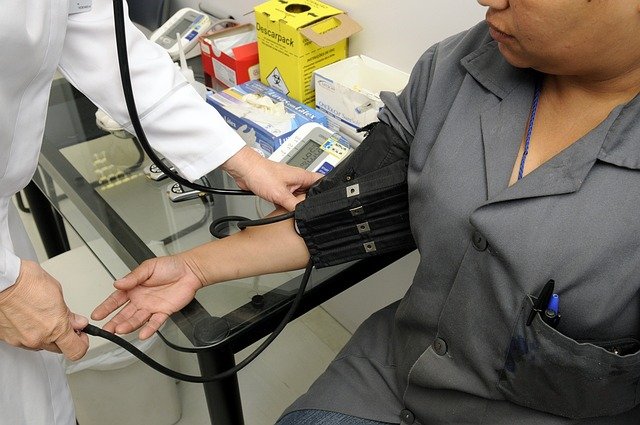Does gastric balloon really help to lose weight
Weight loss remains a significant challenge for millions of people worldwide, particularly those struggling with obesity. While traditional methods like diet and exercise form the foundation of weight management, some individuals require additional medical interventions to achieve sustainable results. The gastric balloon has emerged as a non-surgical option that promises effective weight loss without the risks associated with bariatric surgery. This minimally invasive procedure offers hope for those who haven't found success with conventional weight loss methods, but understanding its effectiveness, mechanisms, and benefits is crucial before making an informed decision.

What is a Gastric Balloon?
A gastric balloon, also known as an intragastric balloon, is a soft silicone device temporarily placed in the stomach to promote weight loss. Unlike permanent bariatric surgeries, this reversible procedure involves inserting a deflated balloon through the mouth using an endoscope, then filling it with saline solution or gas once positioned in the stomach. The balloon typically remains in place for six months, during which it occupies space in the stomach and creates a feeling of fullness with smaller food portions.
Several types of gastric balloons are available, including single balloon systems and dual balloon configurations. The procedure requires no incisions and can usually be completed within 20-30 minutes under mild sedation. Most patients can return home the same day, making it an attractive option for those seeking weight loss intervention without the commitment and risks of permanent surgical procedures.
How Does the Gastric Balloon Work?
The gastric balloon operates through both mechanical and hormonal mechanisms to facilitate weight loss. Mechanically, the balloon takes up approximately one-third of the stomach’s volume, significantly reducing the space available for food. This physical restriction means patients feel satisfied after consuming much smaller portions than previously required, naturally leading to reduced caloric intake.
Beyond the mechanical aspect, the balloon also triggers hormonal changes that support weight loss. The constant presence of the balloon stimulates the release of satiety hormones, including GLP-1 and peptide YY, which signal the brain that the stomach is full. Additionally, the balloon may slow gastric emptying, meaning food remains in the stomach longer, prolonging the feeling of fullness between meals.
The combination of physical restriction and hormonal influence creates an environment where patients can develop healthier eating habits. During the six-month treatment period, individuals typically work with nutritionists and healthcare providers to establish sustainable dietary patterns that continue supporting weight loss even after balloon removal.
Benefits of Gastric Balloon for Weight Loss
The gastric balloon offers numerous advantages for appropriate candidates seeking effective weight loss solutions. Clinical studies demonstrate that patients typically lose 20-50% of their excess body weight during the six-month treatment period, with average weight loss ranging from 15-25 kilograms depending on individual factors and adherence to dietary guidelines.
One of the most significant benefits is the non-surgical nature of the procedure. Unlike gastric bypass or sleeve gastrectomy, the balloon insertion involves no cutting, stapling, or permanent alteration of digestive anatomy. This translates to lower risks, shorter recovery times, and the ability to reverse the procedure if necessary. Most patients experience minimal downtime and can resume normal activities within a few days.
The temporary nature of the gastric balloon also appeals to individuals who want to experience significant weight loss without permanent surgical commitment. During the treatment period, patients often see improvements in obesity-related conditions such as type 2 diabetes, high blood pressure, and sleep apnea. The procedure serves as a bridge to healthier lifestyle habits, providing the initial momentum needed for long-term weight management success.
Cost Considerations and Provider Options
The cost of gastric balloon procedures varies significantly depending on the provider, location, and specific type of balloon used. In Pakistan, private healthcare facilities typically charge between PKR 350,000 to PKR 600,000 for the complete treatment package, including pre-procedure consultations, the balloon insertion, follow-up care, and removal.
| Provider Type | Location | Cost Range (PKR) | Inclusions |
|---|---|---|---|
| Private Hospitals | Major Cities | 400,000-600,000 | Complete package with follow-up |
| Specialized Clinics | Urban Areas | 350,000-500,000 | Basic package, additional costs may apply |
| Medical Centers | Tier-2 Cities | 300,000-450,000 | Variable inclusions, verify coverage |
Prices, rates, or cost estimates mentioned in this article are based on the latest available information but may change over time. Independent research is advised before making financial decisions.
Several factors influence the total cost, including the type of balloon system chosen, duration of follow-up care, nutritional counseling services, and any additional medical evaluations required. Some healthcare providers offer payment plans or financing options to make the procedure more accessible to qualified candidates.
Research suggests that gastric balloons do indeed help with weight loss when used as part of a comprehensive treatment approach. Success rates are highest among patients who combine the balloon with lifestyle modifications, regular medical supervision, and commitment to long-term dietary changes. While individual results vary, the majority of patients achieve clinically significant weight loss during the treatment period.
The effectiveness extends beyond the six-month balloon placement for many individuals. Studies indicate that patients who maintain the healthy habits developed during treatment often continue losing weight or maintain their weight loss after balloon removal. However, without ongoing lifestyle modifications, some weight regain is possible, emphasizing the importance of viewing the gastric balloon as a tool rather than a complete solution.
For optimal results, candidates should have a BMI between 30-40, be committed to dietary changes, and have realistic expectations about the weight loss process. The gastric balloon represents a valuable middle ground between non-invasive weight loss methods and major bariatric surgery, offering substantial benefits for appropriately selected patients ready to embrace comprehensive lifestyle changes.
This article is for informational purposes only and should not be considered medical advice. Please consult a qualified healthcare professional for personalized guidance and treatment.




